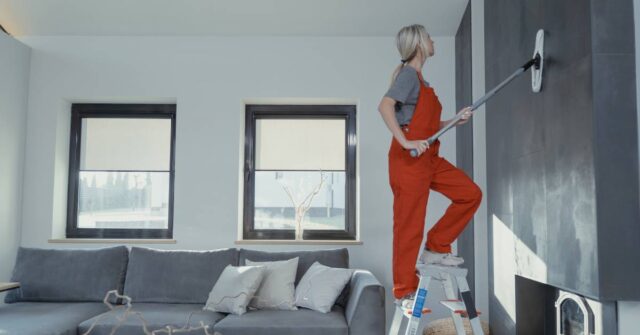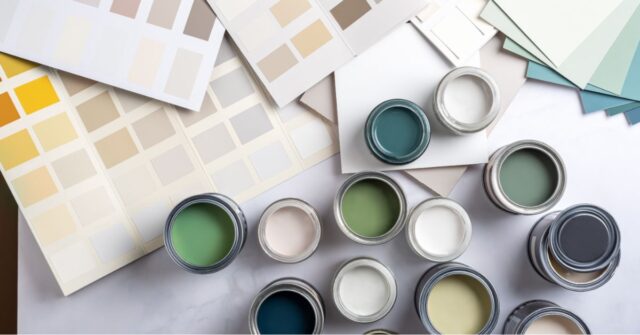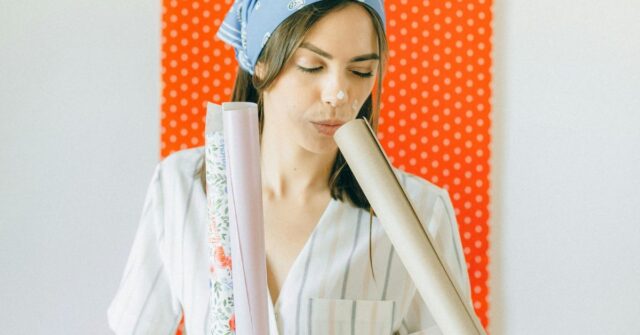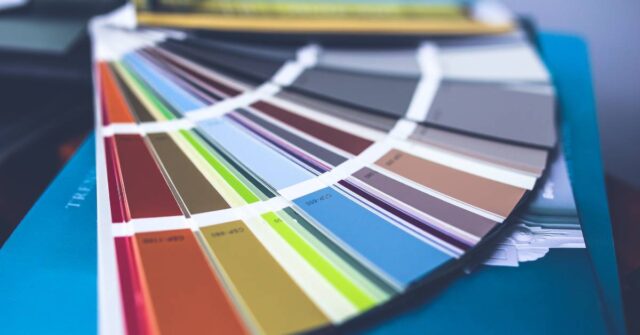Stains and scuffs are an inevitable part of life, particularly in busy Australian households.
But fear not, because these blemishes on your painted surfaces can be effectively managed and removed with a little knowledge and the right approach.
This comprehensive guide will provide you with all the tips you need for removing stains and scuffs from various types of painted surfaces. Let’s dive in and turn those walls back into pristine canvases.


Understanding Different Types of Painted Surfaces
Before we embark on stain removal techniques, it’s essential to understand the different types of painted surfaces that exist.
The type of paint used on a surface can significantly influence the appropriate cleaning method.
In general, there are three common types of paint you’ll find in Australian homes: water-based, oil-based, and enamel.
Water-Based Paint
Water-based paints, also known as acrylic or latex paints, are widely used because of their ease of application and environmental friendliness.
However, they are slightly less durable than their oil-based counterparts and can be sensitive to harsh cleaning agents.
Special care is needed when dealing with stains on these surfaces to prevent further damage.
Oil-Based Paint
Oil-based paints offer a higher level of durability and create a smoother, glossy finish, which can be easier to clean.
However, they can also be sensitive to certain types of cleaning solutions and require their unique care.
Enamel Paint
Enamel paint is renowned for its hard, glossy finish and resilience, making it ideal for high-traffic areas and exterior surfaces.
These surfaces can typically withstand more aggressive cleaning methods, but it’s always better to err on the side of caution.
General Principles for Stain and Scuff Removal
When addressing stains and scuffs, there are several general principles to follow. Always start with the gentlest method possible, such as water and a soft cloth, before moving on to stronger solutions.
Furthermore, always test a cleaning solution on a small, inconspicuous area before applying it to a visible stain.
These precautionary measures will help prevent the potential spread of stains and any further damage to your painted surfaces.


Removing Stains from Walls & Painted Surfaces
Stains can be a frustrating sight on your otherwise pristine painted walls. Understanding the nature of the stain and how to tackle it effectively is the first step to restoring your walls to their former glory.
Understanding the Type of Stain
Each stain type—whether it be ink, coffee, grease, or something else—has its unique properties and requires a specific approach for effective removal.
The key to successful stain removal lies in identifying the cause of the stain.
Common Household Stains and Their Solutions
In the next sections, we’ll examine the most common household stains Australian homeowners encounter and how to tackle them.
Ink Stains
Ink stains can be challenging to remove, but they’re not invincible. The trick to removing ink stains is to blot the stain gently—never rub—as this could spread the ink.
A solution of dishwashing liquid and warm water often works well for water-based inks, while hairspray or alcohol can be useful for tougher inks.
Coffee and Tea Stains
Coffee and tea stains can leave a lingering brown discolouration on your painted walls. Mixing a solution of half water and half bleach and applying it with a sponge or cloth can often lift these stains.
However, remember to test any solution on a small, hidden area first.
Grease Stains
Grease stains are common in kitchens and can be stubborn. However, a solution of warm water and dish soap applied with a sponge can typically cut through the grease and lift the stain.
Baking soda is also effective at absorbing grease and can be used as a follow-up treatment.
Mould Stains
Mould stains not only look unsightly but can also pose a health risk. They are common in damp areas such as bathrooms.
A solution of bleach and water is usually effective for removing mould stains, but always wear gloves and a mask for protection when dealing with mould.
Children’s Artwork Stains
Whether it’s crayons, markers, or paint, children’s artwork can often end up on the wall. A gentle detergent mixed with warm water can often do the trick for water-based art supplies.
For stubborn marks like crayon wax, a bit of baking soda mixed into a paste can work wonders.


Removing Scuffs from Walls & Painted Surfaces
Scuff marks can be an eyesore, particularly on lighter walls. Fortunately, they can often be removed with a little elbow grease and the right approach.
Tackling Scuff Marks
A simple eraser can often remove scuff marks, particularly those caused by shoes or furniture. For tougher scuffs, a magic eraser or a baking soda paste can be quite effective.
It’s important to gently rub to avoid damaging the paintwork.
Addressing Scratches
If your painted surface has been scratched, it may require a bit more attention. Small scratches can often be camouflaged with a bit of matching paint.
For deeper scratches, you may need to fill the scratch with a small amount of plaster before repainting.
Safe Stain and Scuff Removal Practices
While it’s important to remove stains and scuffs from painted surfaces, it’s even more critical to do so safely and without causing further damage.
Let’s take a look at some safe practices for stain and scuff removal.
Testing Cleaning Solutions
Always test any cleaning solutions on a hidden area of the wall before applying them to the stain or scuff. This way, you can ensure that the solution won’t harm the paint or cause discolouration.
Protecting Your Health and Safety
Always take safety precautions when dealing with harsh chemicals or mould. This includes wearing gloves, a mask, and eye protection, and ensuring the area is well-ventilated.
Environmental Considerations
Whenever possible, opt for environmentally friendly cleaning solutions. Not only are they less harmful to the environment, but they’re also often safer for you and your family.
Many common household items, like vinegar and baking soda, can be used as natural cleaning agents.
Preventing Stains and Scuffs
Prevention is always better than cure. While it’s impossible to avoid every potential stain or scuff, there are ways to reduce their likelihood and protect your painted surfaces.


Choosing the Right Paint
The type of paint you choose can significantly impact how prone your walls are to stains and scuffs.
High-gloss paints, for instance, are more durable and easier to clean than matte finishes. Consider your lifestyle and the room’s use when selecting paint.
Utilising Protective Measures
Using furniture pads, avoiding shoes indoors, and having a designated art area for children can all help protect your painted surfaces from stains and scuffs.
It’s also worth considering protective wall coverings in high-traffic areas or rooms used by children.
Professional Help for Stain and Scuff Removal
Sometimes, stains and scuffs can be too stubborn, or the damage is too extensive for DIY methods. In these cases, professional help may be needed.
When to Call a Professional
If you’ve tried multiple methods without success, or if the stain or scuff covers a large area, it may be time to call a professional.
They have the expertise and tools to handle even the most challenging paint issues.
Finding Trusted Professionals in Australia
There are many reputable professional cleaning and painting services available throughout Australia. Ensure to check reviews, and credentials, and ask for a quote before committing to a service provider.


Conclusion
Removing stains and scuffs from painted surfaces doesn’t have to be a daunting task. With a little knowledge, the right approach, and a bit of elbow grease, you can keep your walls looking their best.
Remember, always start gently and test your cleaning solutions, and don’t hesitate to call in the professionals when needed. Happy cleaning!





